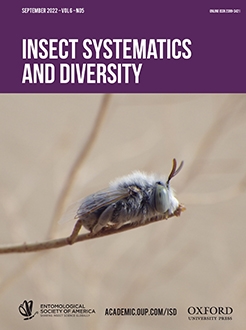Broadly distributed species experience divergent abiotic conditions across their ranges that may drive local adaptation. Montane systems where populations are distributed across both latitudinal and elevational gradients are especially likely to produce local adaptation due to spatial variation in multiple abiotic factors, including temperature, oxygen availability, and air density. We use whole-genome resequencing to evaluate the landscape genomics of Bombus vancouverensis Cresson (Hymenoptera: Apidae), a common montane bumble bee that is distributed throughout the western part of North America. Combined statistical approaches revealed several large windows of outlier SNPs with unusual levels of differentiation across the region and indicated that isothermality and elevation were the environmental features most strongly associated with these variants. Genes found within these regions had diverse biological functions, but included neuromuscular function, ion homeostasis, oxidative stress, and hypoxia that could be associated with tolerance of temperature, desiccation, or high elevation conditions.The whole-genome sequencing approach revealed outliers occurred in genome regions with elevated linkage disequilibrium, elevated mean FST, and low intrapopulation nucleotide diversity. Other kinds of structural variations were not widely associated with environmental predictors but did broadly match geographic separation. Results are consistent with other studies suggesting that regions of low recombination may harbor adaptive variation in bumble bees within as well as between species and refine our understanding of candidate genes that could be further investigated as possible targets of selection across the B. vancouverensis range.
BioOne.org will be down briefly for maintenance on 14 May 2025 between 18:00-22:00 Pacific Time US. We apologize for any inconvenience.
How to translate text using browser tools
31 December 2022
Whole Genome Sequencing Reveals the Structure of Environment-Associated Divergence in a Broadly Distributed Montane Bumble Bee, Bombus vancouverensis
Sam D. Heraghty,
Sarthok Rasique Rahman,
Jason M. Jackson,
Jeffrey D. Lozier
ACCESS THE FULL ARTICLE
It is not available for individual sale.
This article is only available to subscribers.
It is not available for individual sale.
It is not available for individual sale.
<
Previous Article
|
elevation
environmental association analysis
local adaptation
population divergence
whole genome sequencing





